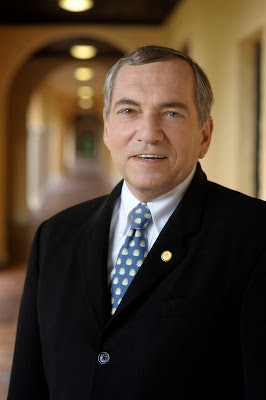 Lewis Duncan, president of Rollins College
Lewis Duncan, president of Rollins CollegeIn these uncertain times, colleges and universities are forced to come up with innovative ways to deal with funding cutbacks and revenue shortfalls. In this installment of “Diverse Conversations,” Lewis Duncan, president of Rollins College, dispenses advice on how institutions can strategically manage their resources to help them thrive during these financially turbulent times.
In the face of unprecedented fiscal challenges, how can colleges and universities maximize their increasingly scarce resources?
Most private liberal arts institutions are highly dependent on student revenue. At Rollins College, for example, 86 percent of our total annual operating budget is derived from student revenue.
One way to maximize increasingly scarce resources is to find innovative ways to supplement the operating budget. Our approach was The Alfond Inn, a boutique hotel that opened in August 2013. The Inn, located a block from campus, not only meets a community need for lodging and conference space, but also provides full scholarships (tuition, room and board) for top students through The Alfond Scholars program — the college’s premier scholarship fund.
Net operating income from the inn will be directed to the scholarship fund for the next 25 years or until the endowment principal reaches $50 million, whichever comes later. The allowable spending from the endowment will supplement the operating budget in the form of additional financial aid support.
What’s the value of your school’s endowment now compared to last year? How has this impacted the way that you allocate your university’s resources?
The market value of our endowment on May 31, 2013, was $349.1 million, which is an increase of $17.6 million over the previous year. Currently, our endowment provides approximately 10 percent of our annual operating costs, and that percentage has held constant through market fluctuations.
In addition to our endowment, we have invested in commercial real estate in the Winter Park community, which annually provides more than $2 million in net return in support of our operations. The real estate is also increasing in value and could be sold at some point in the future, which would add to our endowment investments.
Given the current economic climate, how have you addressed the fragile balance of maintaining high academic standards with the need to keep enrollment high enough to pay the bills?
Rollins has experienced record enrollment in our undergraduate day programs each year for the past three years. We are now nearing 1,900 students, which is close to capacity. We are landlocked and do not have the opportunity to continue to expand enrollment, which makes it even more important to look toward other sources for funds to help pay for the increasing costs of operations.
Through this growth period, we have been able to maintain our high academic standards with a low faculty-to-student ratio and continued recognition as the No. 1 comprehensive private liberal arts institution in the South as rated by US News & World Report. We will not compromise academic standards.
What do you think should be done to reform the way we fund higher education in the United States?
We might find better incentives for families to plan long term and save for college. The current federal grants and loan programs actually advantage families who have not saved. Perhaps we could consider a partial tax deduction for such educational savings plans at the federal (rather than state) level. We also support additional measures of educational accountability, but urge that such standards consider the lifelong and career-long benefits of higher education, not just a graduate’s entry-level job or pay.
As you look to Rollins College’s future, what new directions do you see the university taking?
We will be seeking to run the college as efficiently as possible while preserving the special values of a liberal arts education. We will also be pursuing new revenue opportunities in both degree and non-degree programs, expanding partnerships with similar small colleges using online and blended learning cooperative programs, and expanding our traditional student body to include additional non-traditional and international students.
This concludes my interview with President Duncan. I would like to thank him for consenting to this interview and for his contributions to the field of higher education.


















